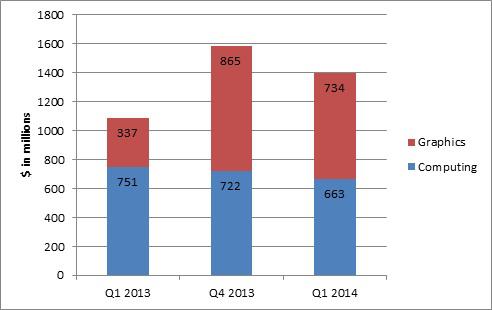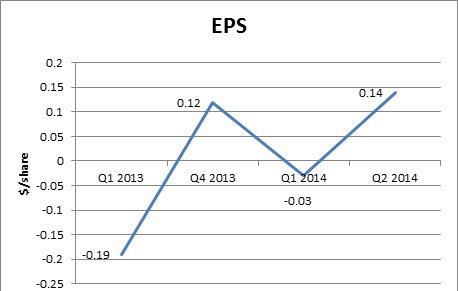| Currently 0.00/512345 Rating: 0.0/5 (0 votes) | |

Subscribe via Email

Subscribe RSS Comments Please leave your comment:
More GuruFocus Links
| Latest Guru Picks | Value Strategies |
| Warren Buffett Portfolio | Ben Graham Net-Net |
| Real Time Picks | Buffett-Munger Screener |
| Aggregated Portfolio | Undervalued Predictable |
| ETFs, Options | Low P/S Companies |
| Insider Trends | 10-Year Financials |
| 52-Week Lows | Interactive Charts |
| Model Portfolios | DCF Calculator |
RSS Feed  | Monthly Newsletters |
| The All-In-One Screener | Portfolio Tracking Tool |

MORE GURUFOCUS LINKS
| Latest Guru Picks | Value Strategies |
| Warren Buffett Portfolio | Ben Graham Net-Net |
| Real Time Picks | Buffett-Munger Screener |
| Aggregated Portfolio | Undervalued Predictable |
| ETFs, Options | Low P/S Companies |
| Insider Trends | 10-Year Financials |
| 52-Week Lows | Interactive Charts |
| Model Portfolios | DCF Calculator |
RSS Feed  | Monthly Newsletters |
| The All-In-One Screener | Portfolio Tracking Tool |
VRX STOCK PRICE CHART

135.41 (1y: +81%) $(function(){var seriesOptions=[],yAxisOptions=[],name='VRX',display='';Highcharts.setOptions({global:{useUTC:true}});var d=new Date();$current_day=d.getDay();if($current_day==5||$current_day==0||$current_day==6){day=4;}else{day=7;} seriesOptions[0]={id:name,animation:false,color:'#4572A7',lineWidth:1,name:name.toUpperCase()+' stock price',threshold:null,data:[[1366693200000,74.98],[1366779600000,74.82],[1366866000000,73.59],[1366952400000,73.16],[1367211600000,75.94],[1367298000000,76.08],[1367384400000,73.69],[1367470800000,72.15],[1367557200000,73.68],[1367816400000,73.42],[1367902800000,74.07],[1367989200000,73.86],[1368075600000,72.74],[1368162000000,73.52],[1368421200000,75.89],[1368507600000,77.3],[1368594000000,76.33],[1368680400000,75.75],[1368766800000,78.17],[1369026000000,75.38],[1369112400000,75.53],[1369198800000,74.82],[1369285200000,74.67],[1369371600000,84.47],[1369717200000,91.8],[1369803600000,90.81],[1369890000000,91],[1369976400000,91.12],[1370235600000,88.21],[1370322000000,85.18],[1370408400000,84.16],[1370494800000,84.87],[1370581200000,85.59],[1370840400000,85.11],[1370926800000,83.77],[1371013200000,83.36],[1371099600000,85.81],[1371186000000,84.2],[1371445200000,84.82],[1371531600000,85.86],[1371618000000,86.41],[1371704400000,83.84],[1371790800000,84.42],[1372050000000,84],[1372136400000,85.24],[1372222800000,84.95],[1372309200000,86.15],[1372395600000,86.08],[1372654800000,88],[1372741200000,89.99],[1372827600000,89.5],[1373000400000,88.77],[1373259600000,90.03],[1373346000000,89.96],[1373432400000,90.2],[1373518800000,92.47],[1373605200000,92.9],[1373864400000,93.8],[1373950800000,91.53],[1374037200000,91.45],[1374123600000,91.39],[1374210000000,90.8],[1374469200000,90.81],[1374555600000,90.49],[1374642000000,91.33],[1374728400000,91.99],[1374814800000,91.96],[1375074000000,91.7],[1375160400000,91],[1375246800000,93.6],[1375333200000,96.04],[1375419600000,96.45],[1375678800000,95.57],[1375765200000,95.72],[1375851600000,97.59],[1375938000000,101.68],[1376024400000,101.87],[1376283600000,101.95],[1376370000000,103.98],[1376456400000,103.9],[1376542800000,102.93],[1376629200000,103],[1376888400000,101.06],[1376974800000,101.53],[1377061200000,99.77],[1377147600000,99.3],[1377234000000,99.52],[137749320000! 0,99.6],[1377579600000,95.8],[1377666000000,97.85],[1377752400000,98.95],[1377838800000,98.34],[1378184400000,99.35],[1378270800000,99.94],[1378357200000,99.8],[1378443600000,100.24],[1378702800000,101.33],[1378789200000,100.2],[1378875600000,100.26],[1378962000000,99.57],[1379048400000,99.2],[1379307600000,101.22],[1379394000000,102.77],[1379480400000,102.83],[1379566800000,106.12],[1379653200000,104.41],[1379912400000,103.08],[1379998800000,103.73],[1380085200000,102.34],[1380171600000,103.29],[1380258000000,104.72],[1380517200000,104.33],[1380603600000,108.16],[1380690000000,109.8],[1380776400000,111.4],[1380862800000,111.01],[1381122000000,110.32],[1381208400000,105.92],[1381294800000,107.03],[1381381200000,110],[1381467600000,109.43],[1381726800000,109.78],[1381813200000,109.73],[1381899600000,110.63],[1381986000000,112],[1382072400000,113.02],[1382331600000,112.3],[1382418000000,112.53],[1382504400000,114.37],[1382590800000,114.29],[1382677200000,112.57],[1382936400000,110.42],[1383022800000,111.06],[1383109200000,109.06],[1383195600000,105.72],[1383282000000,111.2],[1383544800000,110.33],[1383631200000,109.45],[1383717600000,106.45],[1383804000000,103.04],[1383890400000,105.44],[1384149600000,105.16],[1384236000000,105.74],[1384322400000,107.15],[1384408800000,105.86],[1384495200000,107.12],[1384754400000,106.74],[1384840800000,105.92],[1384927200000,106.56],[1385013600000,108.68],[1385100000000,109.55],[1385359200000,108.99],[1385445600000,109.22],[1385532000000,108.35],[1385704800000,109.63],[1385964000000,109.78],[1386050400000,109.19],[1386136800000,107.9],[1386223200000,106.4],[1386309600000,107.67],[1386568800000,107.97],[1386655200000,108.62],[1386741600000,106.49],[1386828000000,106.24],[1386914400000,106.83],[1387173600000,110.92],[1387260000000,109.32],[1387346400000,112.41],[1387432800000,111.9],[1387519200000,112],[1387778400000,112.62],[1387864800000,113.02],[1388037600000,113.56],[1388124000000,113.6],[1388383200000,117.42],[1388469600000,117.4],[1388642400000,116.98],[1388728800000! ,117.16],! [1388988000000,112.62],[1389074400000,125.35],[1389160800000,128.3],[1389247200000,132.17],[1389333600000,133.5],[1389592800000,130.62],[1389679200000,135.01],[1389765600000,133.5],[1389852000000,137.34],[1389938400000,137.93],[1390284000000,136.88],[1390370400000,137.82],[1390456800000,135.02],[1390543200000,132.12],[1390802400000,131],[1390888800000,132.8],[1390975200000,132.8],[1391061600000,136.6],[1391148000000,135.64],[1391407200000,133.36],[1391493600000,135.56],[1391580000000,134.61],[1391666400000,134.43],[1391752800000,137.93],[1392012000000,138.13],[1392098400000,141.31],[1392184800000,140.77],[1392271200000,141.79],[1392357600000,139.57],[1392703200000,146.47],[1392789600000,145.02],[1392876000000,148],[1392962400000,146.26],[1393221600000,145.73],[1393308000000,145.06],[1393394400000,146.34],[1393826400000,143.38],[1393912800000,146.23],[1393999200000,145.13],[1394085600000,138.55],[1394172000000,141.37],[1394427600000,140.74],[1394514000000,139.96],[1394600400000,141],[1394686800000,139.33],[1394773200000,140.01],[1395032400000,140.9],[1395118800000,144.18],[1395205200000,140.79],[1395291600000,140.4],[1395378000000,135.55],[1395637200000,131.47],[1395723600000,131.53],[1395810000000,129.07],[1395896400000,127.19],[1395982800000,127.68],[1396328400000,133.25],[1396414800000,133.69],[1396501200000,129.1],[1396587600000,124.69],[1396846800000,119.23],[1396933200000,122.03],[1397019600000,129.34],[1397106000000,123.33],[1397192400000,118.79],[1397451600000,116.99],[1397538000000,120.12],[1397624400000,121.45],[1397710800000,122.05],[1398056400000,126.01],[1398142800000,135.41],[1398225967000,135.41],[1398225967000,135.41],[1398178947000,135.41]]};var reporting=$('#reporting');Highcharts.setOptions({lang:{rangeSelectorZoom:""}});var chart=new Highcharts.StockChart({chart:{renderTo:'container_chart',marginRight:20,borderRadius:0,events:{load:function(){var chart=this,axis=chart.xAxis[0],buttons=chart.rangeSelector.buttons;function reset_all_buttons(){$.each(chart.rangeSelector.buttons,function(! index,val! ue){value.setState(0);});series=chart.get('VRX');series.remove();} buttons[0].on('click',function(e){chart.showLoading();reset_all_buttons();chart.rangeSelector.buttons[0].setState(2);var extremes=axis.get
 Bloomberg
Bloomberg 






 Related PBR Balanced View on Petrobras - Analyst Blog Company News for April 08, 2014 - Corporate Summary
Related PBR Balanced View on Petrobras - Analyst Blog Company News for April 08, 2014 - Corporate Summary 


 MORE GURUFOCUS LINKS
MORE GURUFOCUS LINKS  135.41 (1y: +81%) $(function(){var seriesOptions=[],yAxisOptions=[],name='VRX',display='';Highcharts.setOptions({global:{useUTC:true}});var d=new Date();$current_day=d.getDay();if($current_day==5||$current_day==0||$current_day==6){day=4;}else{day=7;} seriesOptions[0]={id:name,animation:false,color:'#4572A7',lineWidth:1,name:name.toUpperCase()+' stock price',threshold:null,data:[[1366693200000,74.98],[1366779600000,74.82],[1366866000000,73.59],[1366952400000,73.16],[1367211600000,75.94],[1367298000000,76.08],[1367384400000,73.69],[1367470800000,72.15],[1367557200000,73.68],[1367816400000,73.42],[1367902800000,74.07],[1367989200000,73.86],[1368075600000,72.74],[1368162000000,73.52],[1368421200000,75.89],[1368507600000,77.3],[1368594000000,76.33],[1368680400000,75.75],[1368766800000,78.17],[1369026000000,75.38],[1369112400000,75.53],[1369198800000,74.82],[1369285200000,74.67],[1369371600000,84.47],[1369717200000,91.8],[1369803600000,90.81],[1369890000000,91],[1369976400000,91.12],[1370235600000,88.21],[1370322000000,85.18],[1370408400000,84.16],[1370494800000,84.87],[1370581200000,85.59],[1370840400000,85.11],[1370926800000,83.77],[1371013200000,83.36],[1371099600000,85.81],[1371186000000,84.2],[1371445200000,84.82],[1371531600000,85.86],[1371618000000,86.41],[1371704400000,83.84],[1371790800000,84.42],[1372050000000,84],[1372136400000,85.24],[1372222800000,84.95],[1372309200000,86.15],[1372395600000,86.08],[1372654800000,88],[1372741200000,89.99],[1372827600000,89.5],[1373000400000,88.77],[1373259600000,90.03],[1373346000000,89.96],[1373432400000,90.2],[1373518800000,92.47],[1373605200000,92.9],[1373864400000,93.8],[1373950800000,91.53],[1374037200000,91.45],[1374123600000,91.39],[1374210000000,90.8],[1374469200000,90.81],[1374555600000,90.49],[1374642000000,91.33],[1374728400000,91.99],[1374814800000,91.96],[1375074000000,91.7],[1375160400000,91],[1375246800000,93.6],[1375333200000,96.04],[1375419600000,96.45],[1375678800000,95.57],[1375765200000,95.72],[1375851600000,97.59],[1375938000000,101.68],[1376024400000,101.87],[1376283600000,101.95],[1376370000000,103.98],[1376456400000,103.9],[1376542800000,102.93],[1376629200000,103],[1376888400000,101.06],[1376974800000,101.53],[1377061200000,99.77],[1377147600000,99.3],[1377234000000,99.52],[137749320000! 0,99.6],[1377579600000,95.8],[1377666000000,97.85],[1377752400000,98.95],[1377838800000,98.34],[1378184400000,99.35],[1378270800000,99.94],[1378357200000,99.8],[1378443600000,100.24],[1378702800000,101.33],[1378789200000,100.2],[1378875600000,100.26],[1378962000000,99.57],[1379048400000,99.2],[1379307600000,101.22],[1379394000000,102.77],[1379480400000,102.83],[1379566800000,106.12],[1379653200000,104.41],[1379912400000,103.08],[1379998800000,103.73],[1380085200000,102.34],[1380171600000,103.29],[1380258000000,104.72],[1380517200000,104.33],[1380603600000,108.16],[1380690000000,109.8],[1380776400000,111.4],[1380862800000,111.01],[1381122000000,110.32],[1381208400000,105.92],[1381294800000,107.03],[1381381200000,110],[1381467600000,109.43],[1381726800000,109.78],[1381813200000,109.73],[1381899600000,110.63],[1381986000000,112],[1382072400000,113.02],[1382331600000,112.3],[1382418000000,112.53],[1382504400000,114.37],[1382590800000,114.29],[1382677200000,112.57],[1382936400000,110.42],[1383022800000,111.06],[1383109200000,109.06],[1383195600000,105.72],[1383282000000,111.2],[1383544800000,110.33],[1383631200000,109.45],[1383717600000,106.45],[1383804000000,103.04],[1383890400000,105.44],[1384149600000,105.16],[1384236000000,105.74],[1384322400000,107.15],[1384408800000,105.86],[1384495200000,107.12],[1384754400000,106.74],[1384840800000,105.92],[1384927200000,106.56],[1385013600000,108.68],[1385100000000,109.55],[1385359200000,108.99],[1385445600000,109.22],[1385532000000,108.35],[1385704800000,109.63],[1385964000000,109.78],[1386050400000,109.19],[1386136800000,107.9],[1386223200000,106.4],[1386309600000,107.67],[1386568800000,107.97],[1386655200000,108.62],[1386741600000,106.49],[1386828000000,106.24],[1386914400000,106.83],[1387173600000,110.92],[1387260000000,109.32],[1387346400000,112.41],[1387432800000,111.9],[1387519200000,112],[1387778400000,112.62],[1387864800000,113.02],[1388037600000,113.56],[1388124000000,113.6],[1388383200000,117.42],[1388469600000,117.4],[1388642400000,116.98],[1388728800000! ,117.16],! [1388988000000,112.62],[1389074400000,125.35],[1389160800000,128.3],[1389247200000,132.17],[1389333600000,133.5],[1389592800000,130.62],[1389679200000,135.01],[1389765600000,133.5],[1389852000000,137.34],[1389938400000,137.93],[1390284000000,136.88],[1390370400000,137.82],[1390456800000,135.02],[1390543200000,132.12],[1390802400000,131],[1390888800000,132.8],[1390975200000,132.8],[1391061600000,136.6],[1391148000000,135.64],[1391407200000,133.36],[1391493600000,135.56],[1391580000000,134.61],[1391666400000,134.43],[1391752800000,137.93],[1392012000000,138.13],[1392098400000,141.31],[1392184800000,140.77],[1392271200000,141.79],[1392357600000,139.57],[1392703200000,146.47],[1392789600000,145.02],[1392876000000,148],[1392962400000,146.26],[1393221600000,145.73],[1393308000000,145.06],[1393394400000,146.34],[1393826400000,143.38],[1393912800000,146.23],[1393999200000,145.13],[1394085600000,138.55],[1394172000000,141.37],[1394427600000,140.74],[1394514000000,139.96],[1394600400000,141],[1394686800000,139.33],[1394773200000,140.01],[1395032400000,140.9],[1395118800000,144.18],[1395205200000,140.79],[1395291600000,140.4],[1395378000000,135.55],[1395637200000,131.47],[1395723600000,131.53],[1395810000000,129.07],[1395896400000,127.19],[1395982800000,127.68],[1396328400000,133.25],[1396414800000,133.69],[1396501200000,129.1],[1396587600000,124.69],[1396846800000,119.23],[1396933200000,122.03],[1397019600000,129.34],[1397106000000,123.33],[1397192400000,118.79],[1397451600000,116.99],[1397538000000,120.12],[1397624400000,121.45],[1397710800000,122.05],[1398056400000,126.01],[1398142800000,135.41],[1398225967000,135.41],[1398225967000,135.41],[1398178947000,135.41]]};var reporting=$('#reporting');Highcharts.setOptions({lang:{rangeSelectorZoom:""}});var chart=new Highcharts.StockChart({chart:{renderTo:'container_chart',marginRight:20,borderRadius:0,events:{load:function(){var chart=this,axis=chart.xAxis[0],buttons=chart.rangeSelector.buttons;function reset_all_buttons(){$.each(chart.rangeSelector.buttons,function(! index,val! ue){value.setState(0);});series=chart.get('VRX');series.remove();} buttons[0].on('click',function(e){chart.showLoading();reset_all_buttons();chart.rangeSelector.buttons[0].setState(2);var extremes=axis.get
135.41 (1y: +81%) $(function(){var seriesOptions=[],yAxisOptions=[],name='VRX',display='';Highcharts.setOptions({global:{useUTC:true}});var d=new Date();$current_day=d.getDay();if($current_day==5||$current_day==0||$current_day==6){day=4;}else{day=7;} seriesOptions[0]={id:name,animation:false,color:'#4572A7',lineWidth:1,name:name.toUpperCase()+' stock price',threshold:null,data:[[1366693200000,74.98],[1366779600000,74.82],[1366866000000,73.59],[1366952400000,73.16],[1367211600000,75.94],[1367298000000,76.08],[1367384400000,73.69],[1367470800000,72.15],[1367557200000,73.68],[1367816400000,73.42],[1367902800000,74.07],[1367989200000,73.86],[1368075600000,72.74],[1368162000000,73.52],[1368421200000,75.89],[1368507600000,77.3],[1368594000000,76.33],[1368680400000,75.75],[1368766800000,78.17],[1369026000000,75.38],[1369112400000,75.53],[1369198800000,74.82],[1369285200000,74.67],[1369371600000,84.47],[1369717200000,91.8],[1369803600000,90.81],[1369890000000,91],[1369976400000,91.12],[1370235600000,88.21],[1370322000000,85.18],[1370408400000,84.16],[1370494800000,84.87],[1370581200000,85.59],[1370840400000,85.11],[1370926800000,83.77],[1371013200000,83.36],[1371099600000,85.81],[1371186000000,84.2],[1371445200000,84.82],[1371531600000,85.86],[1371618000000,86.41],[1371704400000,83.84],[1371790800000,84.42],[1372050000000,84],[1372136400000,85.24],[1372222800000,84.95],[1372309200000,86.15],[1372395600000,86.08],[1372654800000,88],[1372741200000,89.99],[1372827600000,89.5],[1373000400000,88.77],[1373259600000,90.03],[1373346000000,89.96],[1373432400000,90.2],[1373518800000,92.47],[1373605200000,92.9],[1373864400000,93.8],[1373950800000,91.53],[1374037200000,91.45],[1374123600000,91.39],[1374210000000,90.8],[1374469200000,90.81],[1374555600000,90.49],[1374642000000,91.33],[1374728400000,91.99],[1374814800000,91.96],[1375074000000,91.7],[1375160400000,91],[1375246800000,93.6],[1375333200000,96.04],[1375419600000,96.45],[1375678800000,95.57],[1375765200000,95.72],[1375851600000,97.59],[1375938000000,101.68],[1376024400000,101.87],[1376283600000,101.95],[1376370000000,103.98],[1376456400000,103.9],[1376542800000,102.93],[1376629200000,103],[1376888400000,101.06],[1376974800000,101.53],[1377061200000,99.77],[1377147600000,99.3],[1377234000000,99.52],[137749320000! 0,99.6],[1377579600000,95.8],[1377666000000,97.85],[1377752400000,98.95],[1377838800000,98.34],[1378184400000,99.35],[1378270800000,99.94],[1378357200000,99.8],[1378443600000,100.24],[1378702800000,101.33],[1378789200000,100.2],[1378875600000,100.26],[1378962000000,99.57],[1379048400000,99.2],[1379307600000,101.22],[1379394000000,102.77],[1379480400000,102.83],[1379566800000,106.12],[1379653200000,104.41],[1379912400000,103.08],[1379998800000,103.73],[1380085200000,102.34],[1380171600000,103.29],[1380258000000,104.72],[1380517200000,104.33],[1380603600000,108.16],[1380690000000,109.8],[1380776400000,111.4],[1380862800000,111.01],[1381122000000,110.32],[1381208400000,105.92],[1381294800000,107.03],[1381381200000,110],[1381467600000,109.43],[1381726800000,109.78],[1381813200000,109.73],[1381899600000,110.63],[1381986000000,112],[1382072400000,113.02],[1382331600000,112.3],[1382418000000,112.53],[1382504400000,114.37],[1382590800000,114.29],[1382677200000,112.57],[1382936400000,110.42],[1383022800000,111.06],[1383109200000,109.06],[1383195600000,105.72],[1383282000000,111.2],[1383544800000,110.33],[1383631200000,109.45],[1383717600000,106.45],[1383804000000,103.04],[1383890400000,105.44],[1384149600000,105.16],[1384236000000,105.74],[1384322400000,107.15],[1384408800000,105.86],[1384495200000,107.12],[1384754400000,106.74],[1384840800000,105.92],[1384927200000,106.56],[1385013600000,108.68],[1385100000000,109.55],[1385359200000,108.99],[1385445600000,109.22],[1385532000000,108.35],[1385704800000,109.63],[1385964000000,109.78],[1386050400000,109.19],[1386136800000,107.9],[1386223200000,106.4],[1386309600000,107.67],[1386568800000,107.97],[1386655200000,108.62],[1386741600000,106.49],[1386828000000,106.24],[1386914400000,106.83],[1387173600000,110.92],[1387260000000,109.32],[1387346400000,112.41],[1387432800000,111.9],[1387519200000,112],[1387778400000,112.62],[1387864800000,113.02],[1388037600000,113.56],[1388124000000,113.6],[1388383200000,117.42],[1388469600000,117.4],[1388642400000,116.98],[1388728800000! ,117.16],! [1388988000000,112.62],[1389074400000,125.35],[1389160800000,128.3],[1389247200000,132.17],[1389333600000,133.5],[1389592800000,130.62],[1389679200000,135.01],[1389765600000,133.5],[1389852000000,137.34],[1389938400000,137.93],[1390284000000,136.88],[1390370400000,137.82],[1390456800000,135.02],[1390543200000,132.12],[1390802400000,131],[1390888800000,132.8],[1390975200000,132.8],[1391061600000,136.6],[1391148000000,135.64],[1391407200000,133.36],[1391493600000,135.56],[1391580000000,134.61],[1391666400000,134.43],[1391752800000,137.93],[1392012000000,138.13],[1392098400000,141.31],[1392184800000,140.77],[1392271200000,141.79],[1392357600000,139.57],[1392703200000,146.47],[1392789600000,145.02],[1392876000000,148],[1392962400000,146.26],[1393221600000,145.73],[1393308000000,145.06],[1393394400000,146.34],[1393826400000,143.38],[1393912800000,146.23],[1393999200000,145.13],[1394085600000,138.55],[1394172000000,141.37],[1394427600000,140.74],[1394514000000,139.96],[1394600400000,141],[1394686800000,139.33],[1394773200000,140.01],[1395032400000,140.9],[1395118800000,144.18],[1395205200000,140.79],[1395291600000,140.4],[1395378000000,135.55],[1395637200000,131.47],[1395723600000,131.53],[1395810000000,129.07],[1395896400000,127.19],[1395982800000,127.68],[1396328400000,133.25],[1396414800000,133.69],[1396501200000,129.1],[1396587600000,124.69],[1396846800000,119.23],[1396933200000,122.03],[1397019600000,129.34],[1397106000000,123.33],[1397192400000,118.79],[1397451600000,116.99],[1397538000000,120.12],[1397624400000,121.45],[1397710800000,122.05],[1398056400000,126.01],[1398142800000,135.41],[1398225967000,135.41],[1398225967000,135.41],[1398178947000,135.41]]};var reporting=$('#reporting');Highcharts.setOptions({lang:{rangeSelectorZoom:""}});var chart=new Highcharts.StockChart({chart:{renderTo:'container_chart',marginRight:20,borderRadius:0,events:{load:function(){var chart=this,axis=chart.xAxis[0],buttons=chart.rangeSelector.buttons;function reset_all_buttons(){$.each(chart.rangeSelector.buttons,function(! index,val! ue){value.setState(0);});series=chart.get('VRX');series.remove();} buttons[0].on('click',function(e){chart.showLoading();reset_all_buttons();chart.rangeSelector.buttons[0].setState(2);var extremes=axis.get
 Gerardo Tabones
Gerardo Tabones 
 Popular Posts: 7 Biotechnology Stocks to Buy Now10 Best “Strong Buy” Stocks — UA POWR QIHU and moreHottest Energy Stocks Now – RIG ESV DO ATW Recent Posts: 4 Health Care Provider Stocks to Buy Now 5 Stocks With Bad Earnings Growth — BBRY TCI ZQK RBCN ARL 5 Stocks With Prime Earnings Growth — OME KNOP LRCX CODI INOC View All Posts
Popular Posts: 7 Biotechnology Stocks to Buy Now10 Best “Strong Buy” Stocks — UA POWR QIHU and moreHottest Energy Stocks Now – RIG ESV DO ATW Recent Posts: 4 Health Care Provider Stocks to Buy Now 5 Stocks With Bad Earnings Growth — BBRY TCI ZQK RBCN ARL 5 Stocks With Prime Earnings Growth — OME KNOP LRCX CODI INOC View All Posts 

 ) was recently in talks to purchase London-based biopharmaceutical company AstraZeneca (AZN
) was recently in talks to purchase London-based biopharmaceutical company AstraZeneca (AZN

